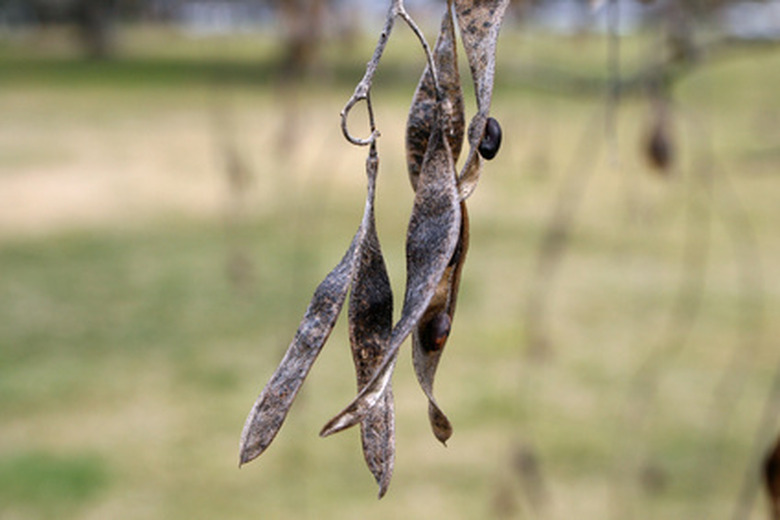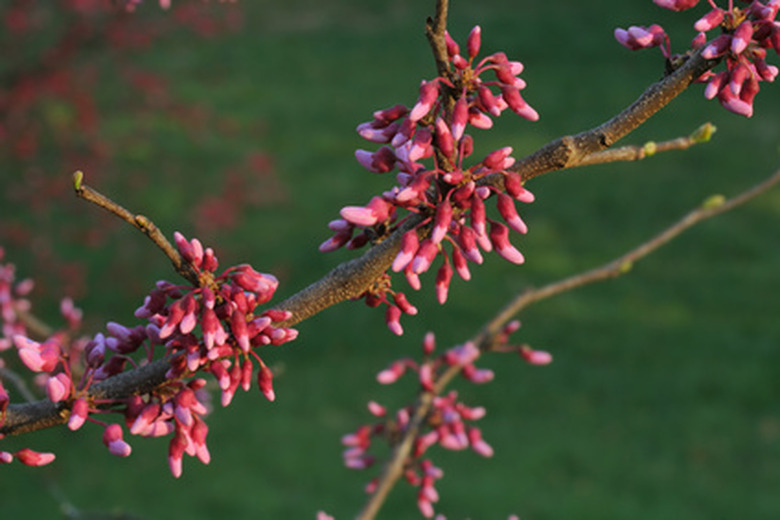Flowering Trees With Pods
Flowering trees with pods can provide your garden with extra interest through added variety of shape, texture, and color combination. The decision to choose flowering trees with pods (narrow, fused encasements of seeds naturally produced by the tree) presents a gardener with many functional options, as well; trees that display flowers as well as pods produce a collection of seeds for future propagation.
Eastern Redbud
Eastern redbud plants (Cercis canadensis) are flowering trees with pods. The Eastern redbud tree displays showy spring flowers in lavender, pink, and purple with green, deciduous leaves. A collection of seeds from the 1 to 3 inch brown pods is the best option to increase your Eastern redbud population as Cercis trees are best if propagated by seed, according to the University of Florida IFAS Extension. Eastern redbud trees thrive in full sun to partial shade, prefer light, rich, moist soil, and reach a height of 20 to 30 feet.
Catalpa
Catalpa trees (Catalpa speciosa), also referred to as Northern catalpas, are flowering trees with pods. Catalpa trees display large, white, clustered flowers during the spring season with large, yellow-green leaves and elongated, brown pods. The North Carolina State University Cooperative Extension explains that these flowering trees thrive in full sun to partial shade, prefer moist, well-drained soil, and reach 40 to 60 feet in height.
- Flowering trees with pods can provide your garden with extra interest through added variety of shape, texture, and color combination.
- The North Carolina State University Cooperative Extension explains that these flowering trees thrive in full sun to partial shade, prefer moist, well-drained soil, and reach 40 to 60 feet in height.
Black Locust
Black locust trees (Robinia pseudoacacia) are flowering trees with pods; black locusts display aromatic, white, fragrant, showy flowers with blue-green, deciduous leaves during spring and dark red to black pods from 2 to 4 inches in length in the fall that persist through the winter season. Black locust trees tolerate drought, salt, and poor soil, and will adapt to nearly any acid or alkaline soil unless consistently wet, according to the University of Florida IFAS Extension. Thriving in full sun to partial shade, black locusts grow to a height of 40 to 70 feet.
Yellowwood
Yellowwood trees (Cladrastis kentukea), also referred to as America yellowwoods, are flowering trees with pods; these trees display white, fragrant, summer flowers with green, deciduous leaves followed by 3 to 4 inch long whitish-grey pods that last through winter. According to the University of Florida IFAS Extension, yellowwood trees are named after their yellow-hued heartwood that creates a yellow dye. Thriving in full sunlight, yellowwoods prefer moist, well-drained soil, and can tolerate alkaline soil. This flowering tree reaches a height of 30 to 50 feet.
- Black locust trees (Robinia pseudoacacia) are flowering trees with pods; black locusts display aromatic, white, fragrant, showy flowers with blue-green, deciduous leaves during spring and dark red to black pods from 2 to 4 inches in length in the fall that persist through the winter season.

